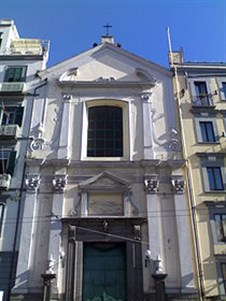Conservatories of Baroque Naples
 The four Neapolitan conservatories of Santa Maria di Loreto (1537), Pietà dei Turchini (1573), Poveri di Gesù Cristo (1589) and Sant’Onofrio a Porta Capuana (1578), were born as places of charity actions managed by the clergy of the city with the objective of accommodating poor or orphaned children. They became, as it’s well known, the places where boys were initiated to music at an early age, and in addition to the normal humanities and the sciences, dedicated themselves daily to instrumental and vocal exercises, studying counterpoint and music theory. The training period lasted at least eight years and by the time these institutions became real schools of music that will form and will work with great masters during the seventeenth and eighteenth centuries, influencing not only religious music but also profane music. Two requirements were, therefore, important: the need to educate and assist the poorest young people received in the four conservatories of the city and the burden of ensuring a worthy musical accompaniment to the urban celebrations. Three of the four conservatories depended on the Royal House, while the Conservatorio dei Poveri di Gesù Cristo was the only one to depend on the Archbishopric. In addition, an important role in the liturgical and musical development of the city was played by various churches, monasteries and congregations in which, although they hadn’t a musical chapel, there was a thriving business to liven up multiple ceremonies. The plague of 1656 contributed to the “massacre” of the Neapolitan people, and thus also of the clergy and religious people. Furthermore, these tragic events were exacerbated by the vast ignorance of the plebeian class, that didn’t have a general and sufficient religious culture. To fill this gap it was important the help of some institutions such as seventeen orphanages for the girls and four conservatories for the boys of the city, where the Christian doctrine was taught, especially with the music. Among other things, the first professional “job” of the children was in musical services provided to private individuals, congregations and religious festivals. In the most solemn festivities, musicians were called in addition to the professionals people who served various religious institutes, churches and chapels, and the children of the conservatories were the primary source that can be used. Later, in the eighteenth century, with the rise of the great public theaters, such as the San Carlo, the Teatro dei Fiorentini, the Teatro Nuovo and many others, it was the production of works in music, or comedy series, to absorb even more the creativity of the conservatories, whose singers and composers would be renowned throughout the world.
The four Neapolitan conservatories of Santa Maria di Loreto (1537), Pietà dei Turchini (1573), Poveri di Gesù Cristo (1589) and Sant’Onofrio a Porta Capuana (1578), were born as places of charity actions managed by the clergy of the city with the objective of accommodating poor or orphaned children. They became, as it’s well known, the places where boys were initiated to music at an early age, and in addition to the normal humanities and the sciences, dedicated themselves daily to instrumental and vocal exercises, studying counterpoint and music theory. The training period lasted at least eight years and by the time these institutions became real schools of music that will form and will work with great masters during the seventeenth and eighteenth centuries, influencing not only religious music but also profane music. Two requirements were, therefore, important: the need to educate and assist the poorest young people received in the four conservatories of the city and the burden of ensuring a worthy musical accompaniment to the urban celebrations. Three of the four conservatories depended on the Royal House, while the Conservatorio dei Poveri di Gesù Cristo was the only one to depend on the Archbishopric. In addition, an important role in the liturgical and musical development of the city was played by various churches, monasteries and congregations in which, although they hadn’t a musical chapel, there was a thriving business to liven up multiple ceremonies. The plague of 1656 contributed to the “massacre” of the Neapolitan people, and thus also of the clergy and religious people. Furthermore, these tragic events were exacerbated by the vast ignorance of the plebeian class, that didn’t have a general and sufficient religious culture. To fill this gap it was important the help of some institutions such as seventeen orphanages for the girls and four conservatories for the boys of the city, where the Christian doctrine was taught, especially with the music. Among other things, the first professional “job” of the children was in musical services provided to private individuals, congregations and religious festivals. In the most solemn festivities, musicians were called in addition to the professionals people who served various religious institutes, churches and chapels, and the children of the conservatories were the primary source that can be used. Later, in the eighteenth century, with the rise of the great public theaters, such as the San Carlo, the Teatro dei Fiorentini, the Teatro Nuovo and many others, it was the production of works in music, or comedy series, to absorb even more the creativity of the conservatories, whose singers and composers would be renowned throughout the world.
